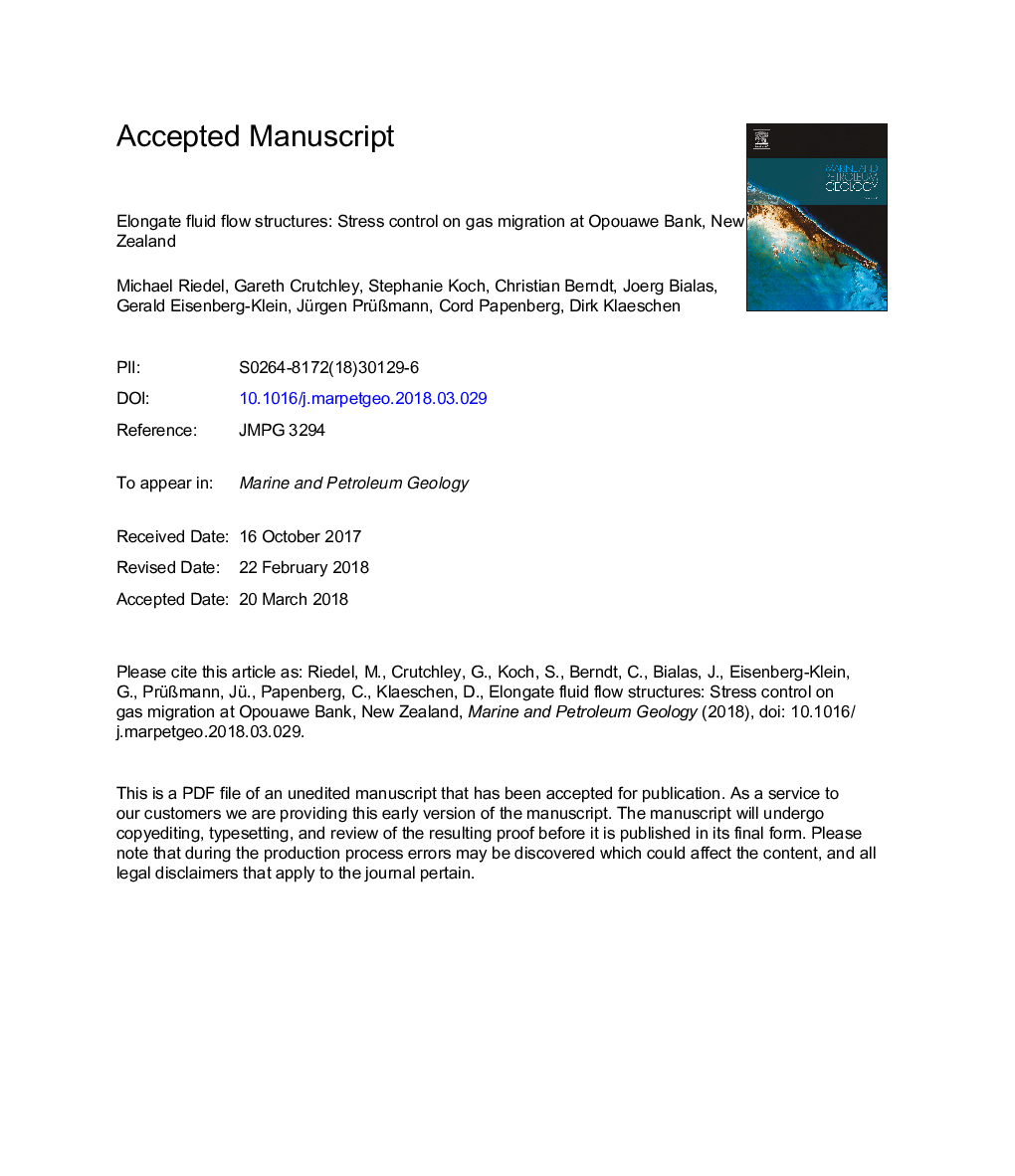| Article ID | Journal | Published Year | Pages | File Type |
|---|---|---|---|---|
| 8909191 | Marine and Petroleum Geology | 2018 | 47 Pages |
Abstract
High-resolution 2D and 3D seismic data from Opouawe Bank, an accretionary ridge on the Hikurangi subduction margin off New Zealand, show evidence for exceptional gas migration pathways linked to the stress regime of the ridge. Although the ridge has formed by thrusting and folding in response to a sub-horizontal principal compressive stress (Ï1), it is clear that local stress conditions related to uplift and extension around the apex of folding (i.e. sub-vertical Ï1) are controlling shallow fluid flow. The most conspicuous structural features are parallel and horizontally-elongated extensional fractures that are perpendicular to the ridge axis. At shallower depth near the seafloor, extensional fractures evolve into more concentric structures which ultimately reach the seafloor where they terminate at gas seeps. In addition to the ridge-perpendicular extensional fractures, we also observe both ridge-perpendicular and ridge-parallel normal faults. This indicates that both longitudinal- and ridge-perpendicular extension have occurred in the past. The deepest stratigraphic unit that we image has undergone significant folding and is affected by both sets of normal faults. Shallower stratigraphic units are less deformed and only host the ridge-parallel normal faults, indicating that longitudinal extension was limited to an older phase of ridge evolution. Present-day gas migration has exploited the fabric from longitudinal extension at depth. As the gas ascends to shallower units it 'self-generates' its flow pathways through the more concentric structures near the seafloor. This shows that gas migration can evolve from being dependent on inherited tectonic structures at depth, to becoming self-propagating closer to the seafloor.
Related Topics
Physical Sciences and Engineering
Earth and Planetary Sciences
Economic Geology
Authors
Michael Riedel, Gareth Crutchley, Stephanie Koch, Christian Berndt, Joerg Bialas, Gerald Eisenberg-Klein, Jürgen PrüÃmann, Cord Papenberg, Dirk Klaeschen,
